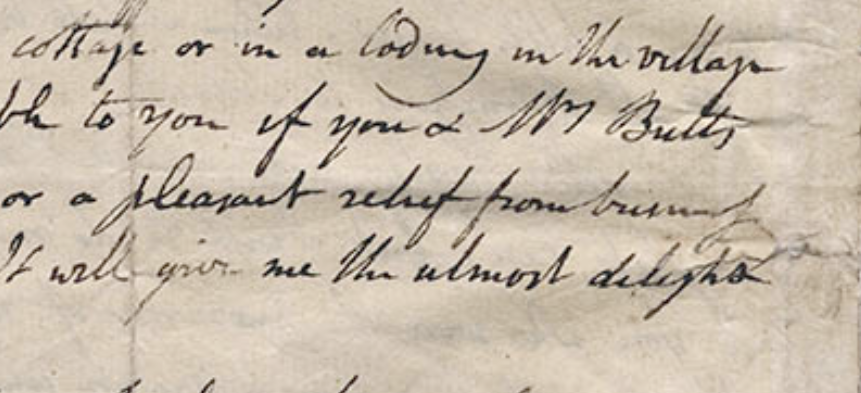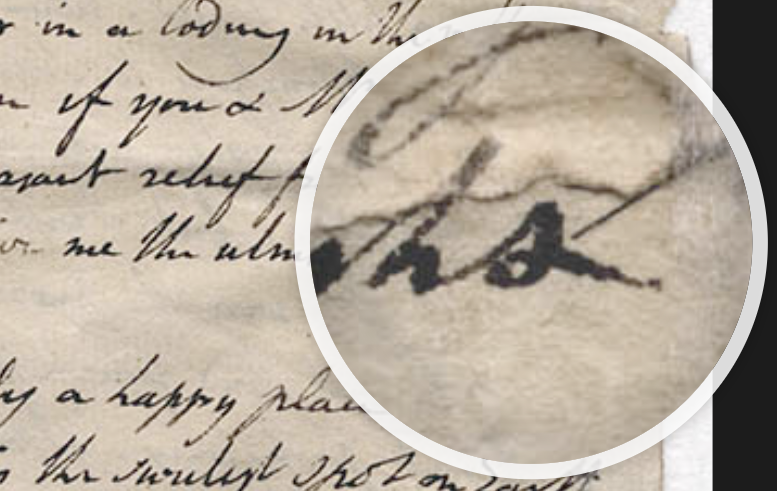While we were working our way through proofing the new batch of Blake’s letters a few months back, I had a better chance that I had ever had before to learn just how useful the magnifying glass can be.
The testing site is pretty much identical to the public site, so like the public site it has the magnifying glass which made it possible to take a magnified look at objects during proofing. This came in handy when trying to make important calls about questionable letters.
The end of the word “delight” in the image below is an example.

When I look at the image and attempt to read the word, it looks like it reads “d-e-l-i-g-h-s.” From the context it seems pretty clear that the word was intended to be “delight,” and indeed, Bentley, Keynes, and Erdman all have “delight.” However, we adhere pretty strictly to a policy of “transcribe what you see,” so if the letter really was unambiguously an “s,” we would want to transcribe it that way, strangeness of spelling notwithstanding.

However, when I glanced at it under the magnifying glass, suddenly I could see how the letter might be a “t.” Honestly, it doesn’t look that much like one, but it looks just as much like a “t” as an “s.”
The magnifying glass is an amazing tool that allows Blake Archive users to get a closer look at objects they’re interested in seeing in more detail. But what I’m learning is that it also has tremendous value for us as editors as we try to make our transcriptions as accurate as possible.

When I was working on my manuscript about Blake’s Job I used a magnifying glass to examine his etchings for Job. I would recommend the use of a magnifying glass to see exceptional detail in his art work as well as in his writing.
I have looked at a lot of Blake’s hand and though this falls squarely within the general ambit of “s” as found in 18th century handwriting it is less typical of Blake’s casual minuscule “s,” which tends to be reduced to a single almost straight stroke rather than the curvilinear “s” which this approximates. This is not a typical “t” for Blake either, but it has the ductus /trace of that letter –and not of Blake’s “s.” I would override the “what you see” rule here in that what you are seeing is not based on Blake’s peculiar letterforms but more general ones.